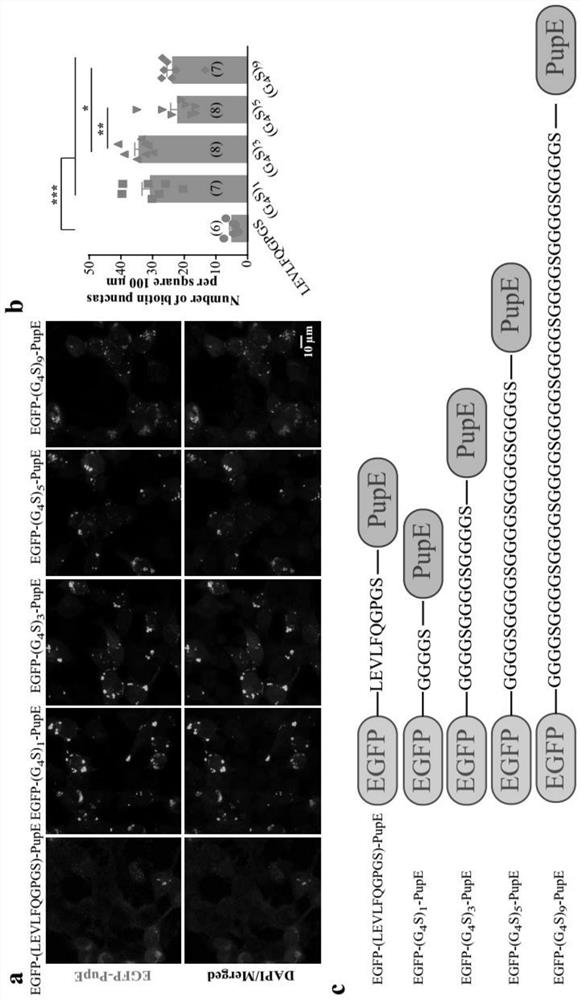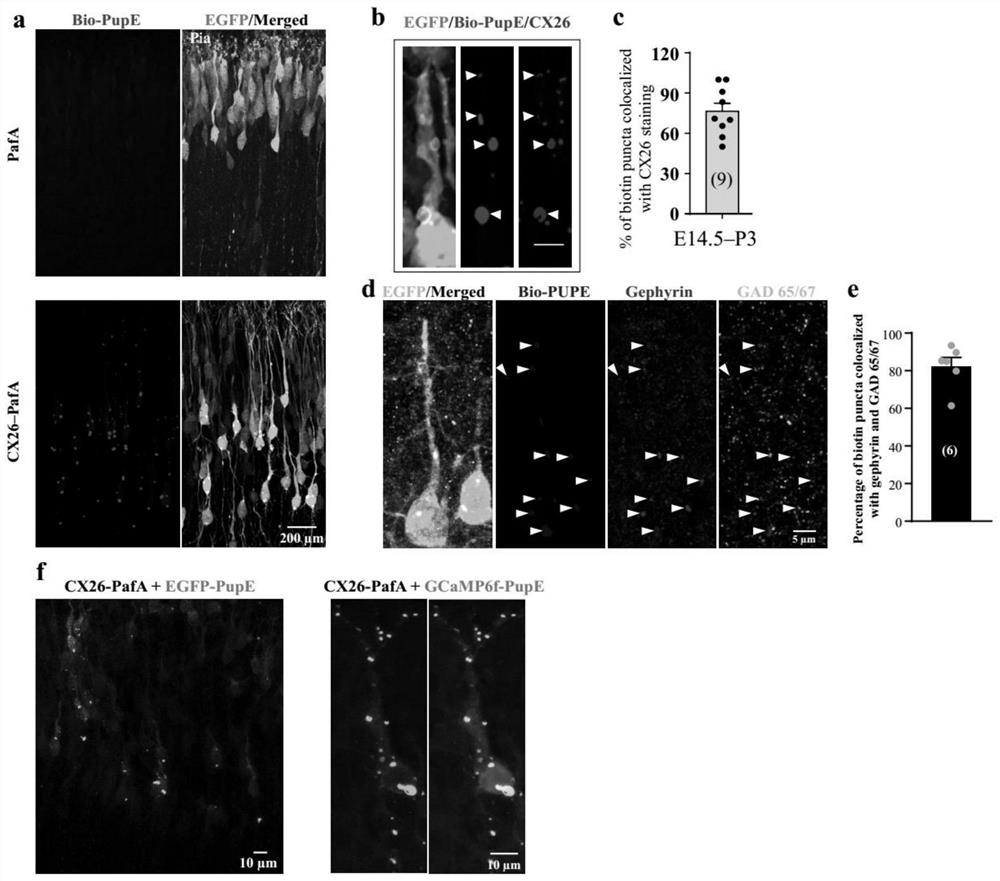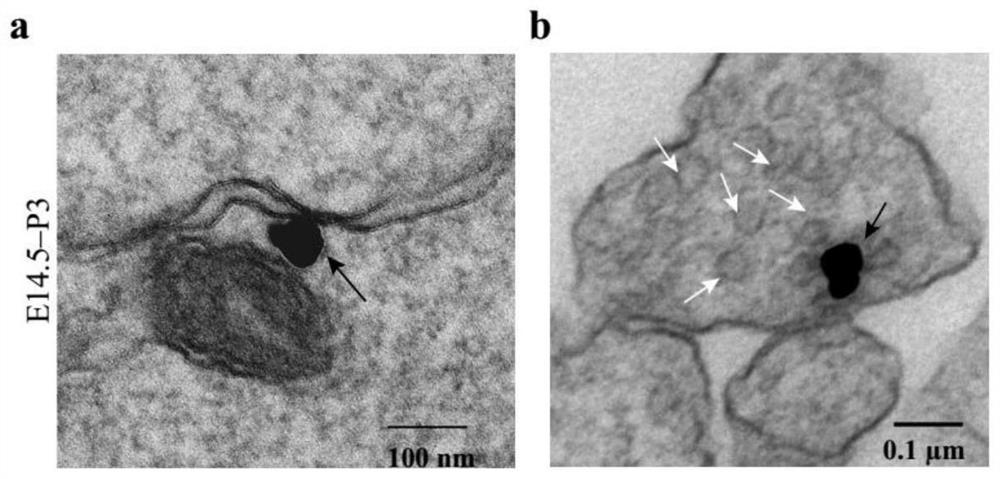In-tissue visual proximity marking method
A labeling method and tissue technology, applied in the field of protein tracking imaging, can solve the problems of highly dynamic changes in difficult inter-neuron connections, and achieve the effect of avoiding the influence of non-specific signals
- Summary
- Abstract
- Description
- Claims
- Application Information
AI Technical Summary
Problems solved by technology
Method used
Image
Examples
Embodiment 1
[0042] 1.1 Breeding method of mice
[0043] The experimental mice used in the present invention are ICR mouse strains. Mice were kept in SPF-grade animal facilities with 12 hours of light and 12 hours of darkness at a temperature of 22-25°C to ensure adequate supply of drinking water and food. All animal experiments were strictly complied with the rules and regulations of the Animal Care and Use Committee of ShanghaiTech University.
[0044] 1.2 Construction of target protein fusion PafA plasmid and fluorescent protein fusion PupE plasmid
[0045] The sequence of electrical synapse protein CX26 was amplified by PCR from the cDNA library of neonatal mouse cortex, and the sequence of inhibitory chemical synapse protein Gephyrin was cloned from the cDNA library of adult mouse cortex. Both CX26 and Gephyrin were fused to PafA using the Gly-Ser-Ser-Gly-Ser (GSSGS, as shown in SEQ ID NO: 1) sequence, and the pCAG-IRES- EGFP plasmid vector. The fluorescent protein EGFP sequence s...
Embodiment 2
[0057] 2.1 Sample preparation for TEM
[0058] Take embryonic mice electroporated with pCAG-CX26-PafA-IRES-EGFP and pCAG-BCCP-PupE-IRES-EGFP plasmid combination, and use 2% paraformaldehyde (TED PELLA, EM grade) 2% glutaraldehyde after anesthesia Mix the solution for cardiac perfusion and quickly dissect out the mouse brain. After the brain was fixed for 3 hours, slices with a thickness of 150 μm were made and soaked in fixative solution overnight at 4°C. Brain slices with fluorescent cells were selected, soaked in 30% sucrose solution for 3 hours, and then repeatedly frozen and thawed in liquid nitrogen for 3 times. Add streptavidin (Nanogold-Streptavidin, Nanoprobes2016) with nano-gold label at a dilution ratio of 1:150, incubate at room temperature for 2 hours, and use the gold particle amplification kit (GoldEnhance EM Plus kit, Nanoprobes2114) to amplify the nano-gold label . After the immunoassay, the cortical areas in the brain slices were excised, fixed with 0.1% os...
PUM
 Login to View More
Login to View More Abstract
Description
Claims
Application Information
 Login to View More
Login to View More - R&D
- Intellectual Property
- Life Sciences
- Materials
- Tech Scout
- Unparalleled Data Quality
- Higher Quality Content
- 60% Fewer Hallucinations
Browse by: Latest US Patents, China's latest patents, Technical Efficacy Thesaurus, Application Domain, Technology Topic, Popular Technical Reports.
© 2025 PatSnap. All rights reserved.Legal|Privacy policy|Modern Slavery Act Transparency Statement|Sitemap|About US| Contact US: help@patsnap.com



